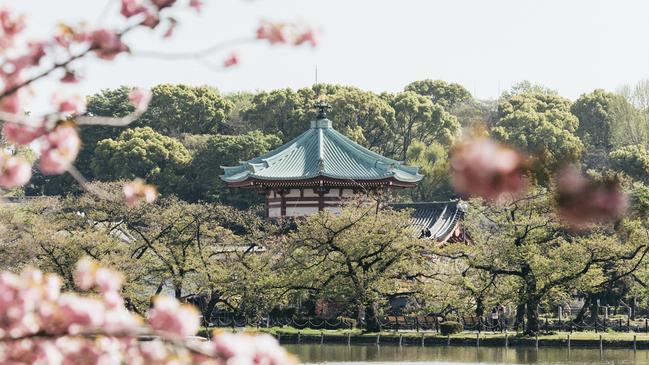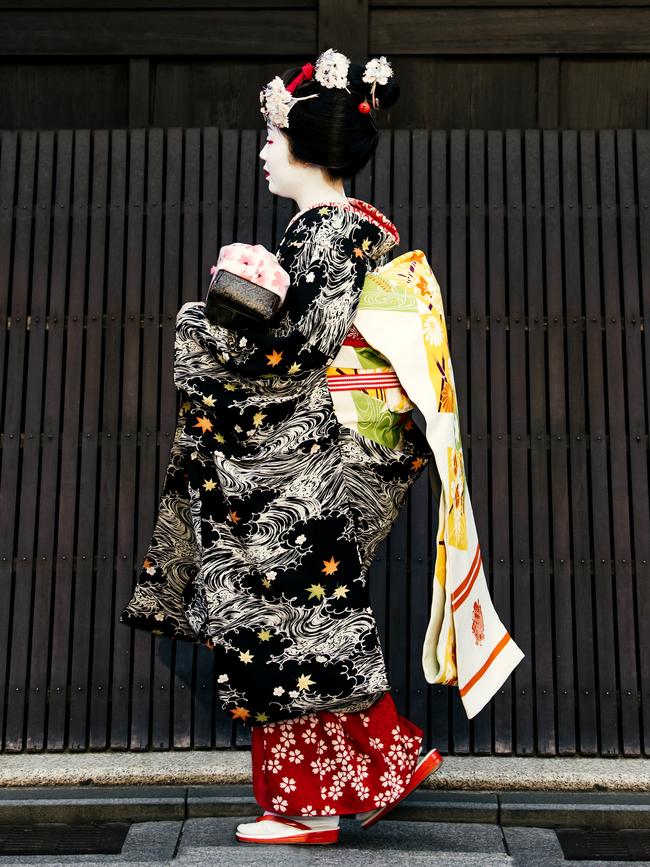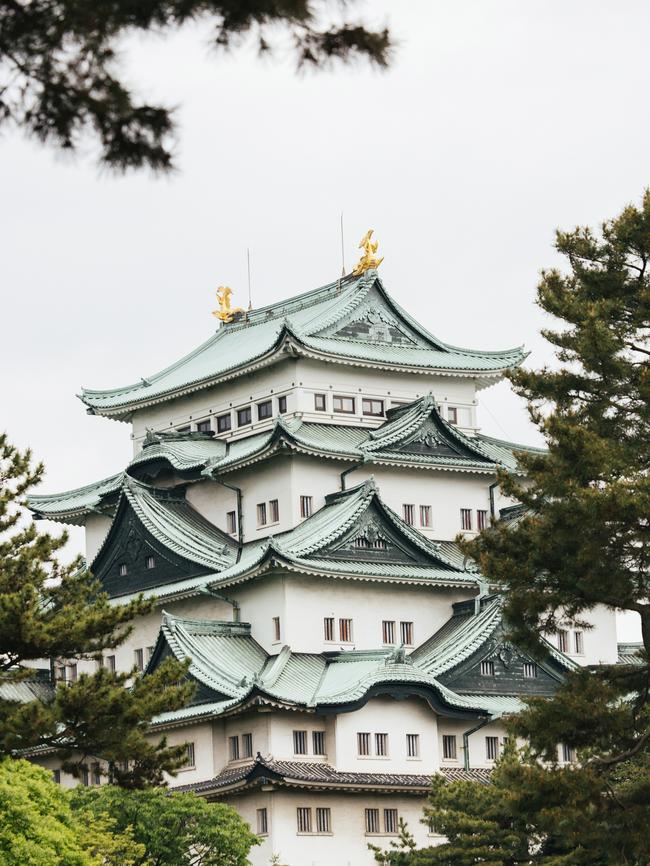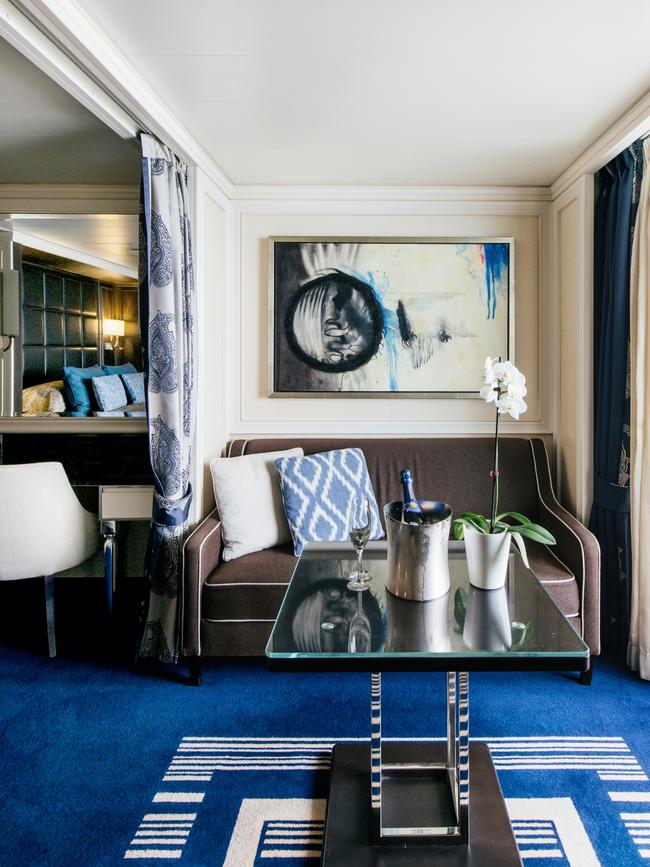Luxury cruise Japan
Steeped in tradition, invested with artistry and blessed with natural beauty, Japan is a destination like no other. The smartest way to visit the Land of the Rising Sun? By sea on an opulent cruise.

Japan makes my head spin in the most marvellous way. It’s a non-stop sushi train of surprises, enchantments, and oddities. Its culinary artistry is especially notable, as dishes become mini masterpieces and produce is elevated to starry heights. A hotpot with a tiny mushroom pressed into the base of a king mushroom stalk, a single flash-fried fish balanced on its fins and the elaborate packaging of fruits, vegetables and, well, everything. Food reaches its apotheosis in Japan but convenience and cuteness are in full swing, too. Need a good strong coffee, hot milky tea or iced green tea? You’ll find a vending machine – which actually works – to deliver a fat little bottle of your chosen brew.
Discover a delicious serving of next-level, food-focused destinations in the latest edition of Travel + Luxury magazine, available online.
There are local versions of deliciousness all around Japan. In the ubiquitous convenience stores we pick up tamagoyaki, the grilled omelette folded with precision, sweet red-bean paste buns decorated with a smiling otter, and delectable ichigo sando – cream and strawberry sandwiches on soft milk bread. In Tokyo’s Ramen Street, we grab a ticket for a bowl of next-level noodles, and at Tsukiji fish market a sea-fresh sashimi rice bowl is piscatorial poetry. In Okinawa, takoyaki (crisp dumplings with octopus) are what fast food should be. Sweet-potato tempura is a salty, fluffy snack in the markets in Kochi. At Nagoya, a breakfast treat comes free with your coffee.


All of this is revealed on a 14-night cruise aboard Regent’s Seven Seas Explorer. Like Japan, Regent is known for dining experiences to remember, meticulous design, and exemplary service. This is the ship’s maiden season in Japan, and the company is embracing it in its signature, all-inclusive style. Every cabin is a suite with a veranda. Our superior suite includes a walk-in closet big enough to twirl in, a private balcony with reclinable wicker chairs and a marble bathroom with twin sinks and a full bathtub – a cruising first for me. The crew-to-passenger ratio on this ship is 1:1.35, with 548 crew and capacity for 746 guests, so it always feels relaxed and rarefied.
The service, meanwhile, is reliably discreet, affable, and professional, from our cabin steward, Celdan, to the deckhands setting out towels and chaises longues around the saltwater pool each morning. In the bars and restaurants, including an American-style steakhouse, French bistro and pan-Asian eatery, the always-on-hand waitstaff welcome guests with a cocktail. Culinistas will appreciate Limoges porcelain dinnerware in the bistro, and the perfectly plated caviar and Champagne breakfast specials. Aesthetes will relish the Explorer’s art collection: 2500 pieces worth more than $9 million on display, including originals by Picasso, Miró and Chagall, gorgeous glassworks and dazzling chandeliers. I wonder if the two giant golf balls at the bottom of the atrium’s grand staircase are nods to Japanese whimsy, but I suspect they’re permanent fixtures (after all, there’s a net for swing practice and mini-golf on the top deck).

Our voyage from Tokyo back to Yokohama takes us to no fewer than nine ports (it would have been 10 but a gale-force wind prohibits us docking at South Korea’s Jeju Island). Almost all shore excursions are included, with castles, shrines, gardens, markets and hot springs the stars of the show. On board, there are actual shows – expert lectures and nightly musical productions in the ship’s Constellation Theater – and a spa where a seaweed wrap is an apt choice. In Kobe, we take a steep funicular ride to the top of Mount Rokko and the morning fog clears to reveal the sprawling city. The cable car travels through pink and red-flecked spring tapestry backed with more shades of green than I knew existed. In Shimizu, at Miho-no-Matsubara, we walk through a tranquil pine forest to a black-sand beach to regard splendid Mount Fuji, which agreeably pops out its peak.
Other highlights from our southernmost stops include a stunning memorial museum to artist Tanaka Isson – who was only recognised posthumously, like French post-Impressionist Paul Gauguin, with whom he’s now compared – at Amami Park. Nearby, the mud-dyeing of silk thread knee deep in a pond and hand-weaving at Oshima Tsumugi Village is jaw-droppingly painstaking. In Okinawa’s Naha we walk through the joyous tat of the Miracle Mile bars and souvenir shops offering everything from sweets made with purple sweet potato to boxer shorts decorated with risqué phrases. The charming Tsuboya Pottery Street leads us to our quarry: a traditional Ryukyuan lunch at Nuchigafu, right next to the city’s historic climbing kiln.


The landscape of Japan’s thousands of islands is rolled and folded, pushed up and out from the Eurasian continent some 15 million years ago by shifting volcanic arcs. Hot springs are a wonderful manifestation of this topography. The highest concentration of hot springs is in Beppu, Oita prefecture, in the southern part of Kyushu. A thick cloak of steam swaddles the city and volcanic energy is used to power “hell ovens” for cooking, as well as to feed local onsen. At Chinoike Jigoku, aka Blood Pond Hell, the red water is rich in iron and magnesium oxide and just cool enough for a footbath. We kick off our shoes and socks and will the water’s healing properties to soak through our skin. It’s blissful anyway. At Umi Jigoku, or Sea Hell, iron sulphate makes the onsen appear cobalt blue – you can find eggs boiled in the water at the shop. The subtropical gardens here are arrayed with bright-red Shinto shrine torii gates, topiaried trees and shrubs, palms, ferns, azaleas and late-blooming yaezakura gathering its frilly pink cherry-blossom skirts. A striking grey heron makes an ungainly landing among the water lilies in the steamy pond and immediately recovers to assume a regal pose.
We also get a glimpse of Japan’s free and pragmatic relationship with religion – from Nagoya’s quiet Toyokuni Shinto shrine to the spectacular World Heritage-listed Kiyomizu-dera Buddhist temple in Kyoto and the Fujisan Sengen Shrine outside Shimizu, dedicated to the great mountain. Guides explain that no one religion is dominant and many Japanese people mix and match across Buddhism and Shinto, with notes of Christianity and Confucianism. In Kyoto, the mystery of the geisha confers an almost religious aura upon the women. As dusk gathers in the Gion district, they emerge to go to work. They are impeccably dressed in distinctive kimonos, faces powdered white, lips cherry red and silk flowers decorating their jet-black wigs as they look straight ahead and walk briskly in their zori. Little wonder they inspire cultish fervour.


Peace is the only viable religion at the Atomic Bomb Museum in Nagasaki. Walk past hundreds of chains of origami paper cranes, all folded for peace, then down a spiral ramp in silence to reach the heartbreaking evidence of the aftermath of the atomic bomb dropped on 9 August 1945. “Please do not forget,” implore words on a plaque. All similar museums and parks in Japan are dedicated to peace rather than war, a notable distinction from the way many Western nations commemorate conflict.
Pandemic restrictions meant Japan was essentially shut to foreign tourists until late last year. The excited welcoming ceremonies that greet us in many ports are only eclipsed by the flag-waving, band-playing farewells, with people yelling “Arigatou!” in gratitude as the ship pulls out. In Kobe and Kochi I have a lump in my throat at the emotional goodbyes directed at we passing strangers aboard a ship that sails in the night. In Nagasaki, there are actual tears in my eyes as the local children’s orchestra plays and dances on the dock as Explorer casts off her mooring lines.
As we sail back to Yokohama, our penultimate port is Kochi. We dock on a Sunday in time for the vibrant weekly market in the shadow of Kochi Castle. Its elegant Edo-period watchtower stands out proudly in black and white against the blue spring sky. The market is almost as old – it’s been running for 300 years and is said to be Japan’s largest. Today there’s everything from the bric-à-brac of old sake jars and vinyl records to stalls with beautifully carved bamboo shoots and exquisite tomatoes and strawberries in neat rows in their punnets. There are hot mugwort rice cakes that taste of spring and the region’s signature inaka-sushi, filled with vegetables and flavoured with yuzu vinegar. It’s the end of the season for buntan, a prized pomelo, and some are being sold individually wrapped as Tosa-buntan, a prefecture specialty.


Passengers with a yen for food experiences can join on-board chef instructor Linda Miller for two-hour cooking classes in the ship’s specially equipped Culinary Arts Kitchen. “You learn so much about a place and its people from the food,” says Miller. At a fish market in Busan – our voyage includes an entertaining day in South Korea – she found a packet of dried squid for her students to taste. “It was in sticks, sweetened and salty.” The antecedents of Busan’s Jagalchi Market are the women who began peddling goods including fresh fish during the Korean War to provide for their families. Today, working in a gleaming modern building, colourfully clad women slosh water over bright tubs of live seafood of every ilk. Pick up some and take it upstairs for the freshest “hoe” (Korea’s sashimi). Across the road, Gukje Market is a maze of side alleys where you can nab a bowl of Busan bibim dangmyeon with cellophane noodles, a jacket for your pooch or a K-pop pillowcase.
Back on board, I’m feeling sentimental as I slide into the infinity pool at the aft of the ship, reflecting on our trip as I look over its shimmering edge. The humour and generosity of our guides, the majesty of castles and shrines, the flowing, erudite designs of storytelling gardens and the astonishing array of art, textiles and ceramics all around swim in my imagination. Japan has shown me how thoughtful artistry elevates the everyday and I am all the richer for it.
-
The writer travelled as a guest of Regent Seven Seas Cruises.
-



To join the conversation, please log in. Don't have an account? Register
Join the conversation, you are commenting as Logout